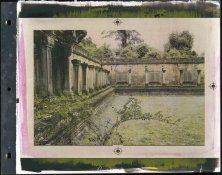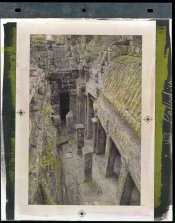NedL
Subscriber
I'm a long way from trying this yet, but I'm interested in making an oil pigment print.
I'm going to try it with AFC instead of a dichromate, like the "direct carbon" section of the "Chiba" system.
Am going to start getting supplies together when I'm making an order from B&S anyway, so maybe next year.
All I really need is some AFC and some pigment.
Anyway, I was reading this page about gum printing, and he talks about a couple interesting ideas.
The first is just using map pins for simple registration. I get the idea, but for people who have done this, is there a best way to pick the placement for the two holes?
If both of the holes were on one side of the paper, maybe you could register the negative and the print, then close 1/2 of the split-back frame to lock it in place, then remove the pins and close the other side? Is that too simple to work? It sounds too easy to be true.
The other question about registration seems much harder. He mentions creating 3 different paper negatives ( soft, medium, hard ) and that seems like it might be a really good idea for oil pigment too, with multiple layers of gelatin and pigment. But how in the world would you get the different negatives in registration? Especially with a paper negative where it would be hard to see even on a good light box! The only idea I've come up with would be to put "pin marks" on the inter-positive, and use those for alignment.... maybe that would work....
thoughts?
I'm going to try it with AFC instead of a dichromate, like the "direct carbon" section of the "Chiba" system.
Am going to start getting supplies together when I'm making an order from B&S anyway, so maybe next year.
All I really need is some AFC and some pigment.
Anyway, I was reading this page about gum printing, and he talks about a couple interesting ideas.
The first is just using map pins for simple registration. I get the idea, but for people who have done this, is there a best way to pick the placement for the two holes?
If both of the holes were on one side of the paper, maybe you could register the negative and the print, then close 1/2 of the split-back frame to lock it in place, then remove the pins and close the other side? Is that too simple to work? It sounds too easy to be true.
The other question about registration seems much harder. He mentions creating 3 different paper negatives ( soft, medium, hard ) and that seems like it might be a really good idea for oil pigment too, with multiple layers of gelatin and pigment. But how in the world would you get the different negatives in registration? Especially with a paper negative where it would be hard to see even on a good light box! The only idea I've come up with would be to put "pin marks" on the inter-positive, and use those for alignment.... maybe that would work....
thoughts?













